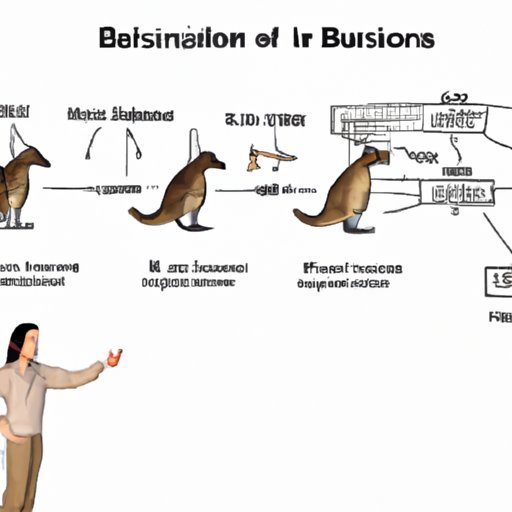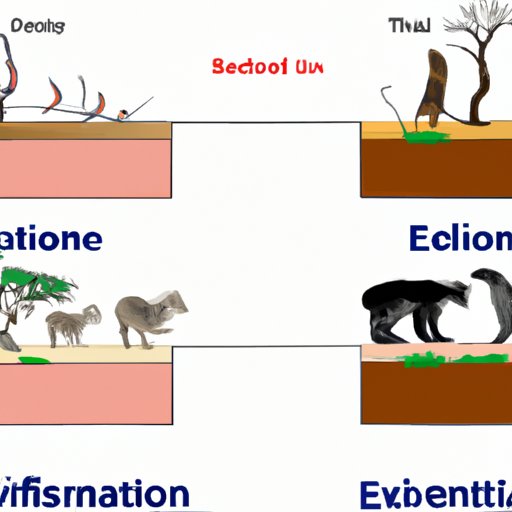Introduction
Natural selection is a scientific theory that explains how evolution works. It’s based on the premise that individuals with certain traits are more likely to survive and reproduce than those without them. Through this process, advantageous traits become more common over time, while less advantageous traits become less common. The result is the gradual evolution of a species.

Explaining the Basics of Natural Selection
The concept of natural selection was first proposed by Charles Darwin in his book On the Origin of Species, published in 1859. In it, he argued that all living things have descended from common ancestors, and that they have evolved through the process of natural selection. He proposed that species adapt to their environment over time, and that those adaptations can give them an advantage in the struggle for survival.
The mechanism of natural selection is simple: within a population, some individuals will have traits that make them better suited to their environment than others. These individuals will be more likely to survive and reproduce, passing their advantageous traits on to their offspring. Over time, these advantageous traits become more common in the population, while disadvantageous traits become less common. This process of selection is referred to as “survival of the fittest”.
Natural selection is also affected by random mutations. Random mutations can occur in an organism’s DNA, resulting in new traits that may or may not be beneficial. If the mutation is advantageous, it can give the organism an edge in the competition for resources and mates. If the mutation is disadvantageous, then it may lead to the organism’s demise.
Examining Natural Selection in Action
Natural selection can be seen in action in many different environments. For example, the peppered moth is a species of moth that has adapted to its environment over time. Before the industrial revolution, most peppered moths had light-colored wings. But when pollution darkened the trees and buildings in its habitat, the moths with darker wings were better camouflaged and had a higher chance of survival. As a result, the dark-winged moths became more common, while the light-winged moths became less common.
In another example, researchers have studied the effects of natural selection on the finches of the Galapagos Islands. They observed that finches with larger beaks were better able to crack open hard nuts, giving them an advantage in the competition for food. Over time, the number of finches with large beaks increased, while the number of finches with small beaks decreased.
These examples demonstrate that natural selection can have a profound impact on the evolution of a species. By favoring certain traits, it can lead to the emergence of new species or the extinction of existing ones.
Conclusion
Natural selection is a powerful force in the evolution of species. By favoring certain traits, it can lead to the emergence of new species or the extinction of existing ones. It is responsible for the adaptations we see in nature, and it is one of the most important concepts to understand when studying evolutionary biology.
In conclusion, natural selection is a scientific theory that explains how evolution works. It is based on the premise that individuals with certain traits are more likely to survive and reproduce than those without them. Through this process, advantageous traits become more common over time, while less advantageous traits become less common. Examples of natural selection in action can be found in many different environments, demonstrating the power of this process in shaping the evolution of species.
(Note: Is this article not meeting your expectations? Do you have knowledge or insights to share? Unlock new opportunities and expand your reach by joining our authors team. Click Registration to join us and share your expertise with our readers.)
